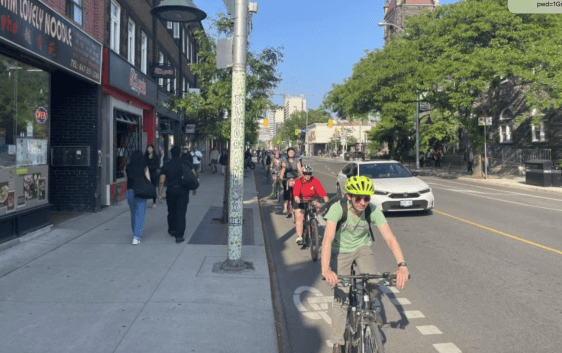Note: GJEL Accident Attorneys regularly sponsors coverage on Streetsblog San Francisco and Streetsblog California. Unless noted in the story, GJEL Accident Attorneys is not consulted for the content or editorial direction of the sponsored content.
The lead image is of De Brouckèreplein, an "incomplete street" in Brussels. It used to be clogged with vehicles, but motorists were banned starting in 2015. Brussels is one of the many cities in Europe that built wide roads and highways to accommodate the automobile and is now undoing much of the damage that caused.
Caltrans issued its new Complete Streets policy just before Christmas. It states that “Caltrans recognizes that streets are not only used for transportation but are also valuable community spaces. Accordingly, in locations with current and/or future pedestrian, bicycle, or transit needs, all transportation projects funded or overseen by Caltrans will provide comfortable, convenient, and connected complete streets facilities for people walking, biking, and taking transit or passenger rail unless an exception is documented and approved."
Great. But what does it mean if none of that is mandatory? And it doesn't apply to the many projects that are already in the pipeline.
Moreover, Caltrans's complete streets directive in 2014 just resulted in lots of this sh*t:

Caltrans and the Alameda County Transportation Commission even gave themselves a complete streets award for creating the Fruitvale pedestrian and bicycle hellscape pictured above. Albeit, there is a bike lane striped in there somewhere.
Unfortunately, Caltrans and many Bay Area agencies have perverted the term "complete streets" to mean they're going to keep widening roads and prioritizing cars but they'll now consider adding bike lanes or transit. But given their records, Caltrans, ACTC, the Transportation Authority of Marin, SamTrans, and the other transportation agencies should not be permitted to build or fund new "complete streets."
Instead, to achieve transportation balance, Caltrans and its partner agencies need to be forced to build a new kind of "incomplete streets": a system of off-road bicycle highways, physically separated lanes, bridges, and pedestrian paths and plazas where motorists are banned. Moreover, the state spends a pittance of its budget on Amtrak. If Caltrans and its local partners want to keep pouring concrete, they can build transit and rail infra that is not attached to some related freeway widening. For example, why not remove I-980 in Oakland and replace it with a rail line? Why can't Caltrans even build a section of high-speed rail or a second BART tube? They have the expertise for land acquisition and doing large projects and they certainly have the budget.
Actual "complete streets" projects should only be funded when it means converting existing car lanes to non-car uses.

In other words, let's aim for some parity between transportation modes.
It's important to acknowledge the cadre of politicians and advocates, many within the ranks of Caltrans and other Bay Area transportation agencies, who are trying to change policy (what could be more promising than John Bauter's recent appointment as chair of the ACTC!). But they all need to be wary of getting bamboozled by slights of hand and "compromises" that end up widening roads under the guise of "complete streets," such as with the bike bridge that's a small part of the Ashby interchange widening pictured above.
It should be obvious, but the Bay Area will never achieve a complete, balanced transportation system by the Caltrans-dictated model of continuing to widen roads, but conceding to add the occasional bike bridge or stripe. There needs to be a moratorium on widening roads (and ramps), including on projects already in the pipeline. All funds need to be shifted to transit and bike infrastructure and, dare I say it, freeway removal where appropriate. State and county transportation agencies need to recognize the pollution, congestion, and traffic violence disasters they've created, as their counterparts in Europe and elsewhere have done, and focus on repairing the mess they've already made in the Bay Area.





